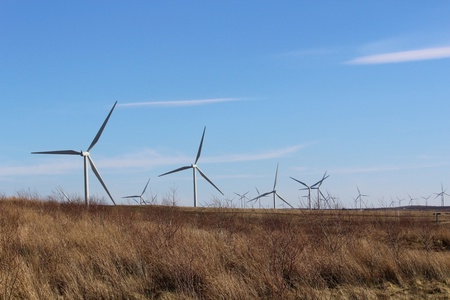A landmark study has found that excluding windfarm development in Great Britain's most scenic areas results in 18% less renewable electricity generation potential and up to 26% higher costs for operators.
The study led by the University of Aberdeen used a website where people rate pictures of landscapes across the country on their scenic value, comparing over a million ratings with the outcome of wind farm planning applications in areas rated the most scenic.
It is the first time that data has been used at a national scale to judge how the beauty of the environment impacts onshore windfarm development. Scientists believe it will help policymakers manage the trade-off between public acceptance and the costs of the required development as part of the energy transition.
The data is drawn from the Scenic or Not website, which is managed by the Data Science Lab at Warwick Business School.
The study, which has been published in the journal Nature Energy, was led by Professor Russell McKenna, from the University of Aberdeen’s School of Engineering, and involves academics from institutions in Denmark, Germany, the Netherlands, and the UK*.
Professor McKenna said: “Previously, the beauty of our environment has proven very challenging to quantify at scale due to a lack of appropriate data. This study plugs that gap by drawing on more than a million ratings of more than 200,000 photographs and feeding the data into a model of onshore wind generation.
“Our approach involves using the Scenic or Not website to estimate where the strongest landscape impact of onshore wind might be.
“We then analyse the relationship between windfarm application planning outcomes and the scenic value of a particular location, drawing on resource assessments for low carbon technologies to estimate the connection costs of new windfarms to the network.
“This allows us to quantify the impact of excluding the most scenic areas from consideration for windfarm development. Our results show that not allowing wind farm installations in the 10% most scenic areas in the UK leads to 18% lower generation potential, and 8-26% higher costs for operators, which could ultimately result in higher prices for consumers.”
Professor McKenna, who has recorded a podcast that further explains his findings, added that the study provides a valuable resource for policymakers to develop national plans for future renewable energy generation.
“The research will help policymakers manage the trade-off between cost-efficiency and public acceptance for onshore wind,” he said.
“Compromises are required at all levels to achieve the energy transition. To effectively address these compromises, policy needs to incentivise investments in onshore wind that consider both cost and landscape as quality criteria.”


